Lembeh macro with a Nikon D750
Lembeh macro with a Nikon D750.
By Fabian Schorp.
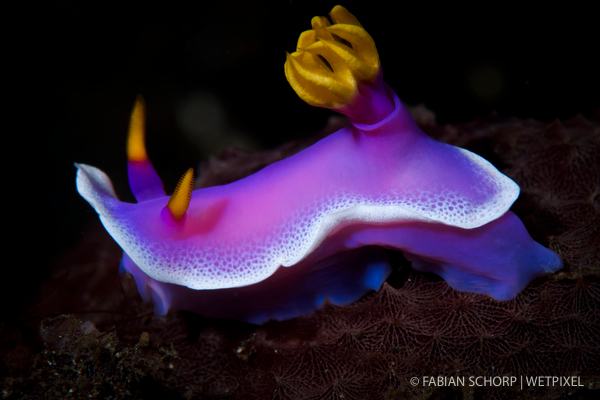
Lembeh Strait, between mainland Sulawesi and Lembeh Island, is a name that inspires wide grins of fond remembrance in underwater photographers who have visited it before, and doubtful faces in those who read descriptions like “this dive site is a sandy slope” without having any muck diving experience.
Fantastic sounding statement to start with: Diving Lembeh Strait is even better than it sounds. As usual before going some place new, expectations tend to soar and then taken back down, lest one be disappointed. In this case you can safely ignore the voice of reason and simply travel to Indonesia excitedly.
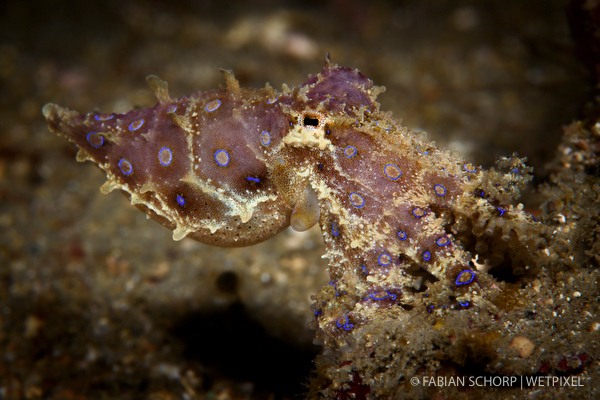
In a relatively small area - Lembeh Strait is only around 18 kilometers long and 2 kilometers wide - you will find around 50 dive sites, ranging from coral and wall dives (Angel’s Window) to full-on muck diving sites (Hairball 1-3), all of them home to a very diverse range of rare marine life.
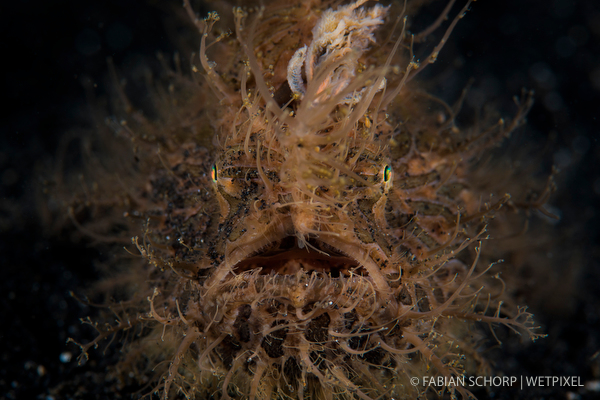
I traveled to Indonesia with all new equipment - moving to a full frame DSLR from a micro four thirds - and just two weeks after taking a (highly recommended) underwater photography course with Martin Edge, author of “The Underwater Photographer”.
Why did I move to a full frame DSLR rather than a crop factor?
The decision between full frame and cropped factor sensors for underwater photography is the subject of a lot of discussions.
Full frame cameras (and the underwater housings for them) are usually larger and heavier, and with luggage allowances becoming more restrictive on many airlines that can be an important factor however, Nikon’s new D750 is significantly more compact than previous models. In fact, as this article shows, there’s only a marginal difference between the D750 and the popular D7100.
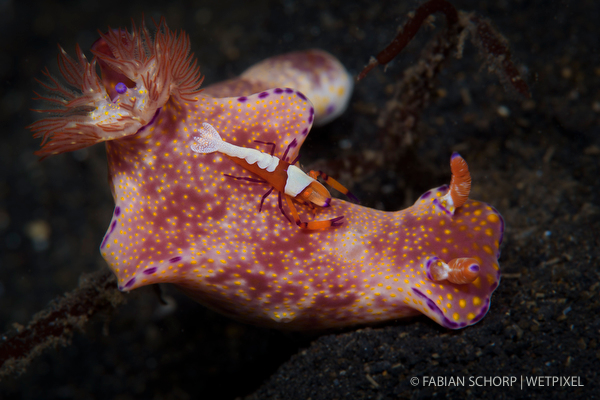
The second consideration is the diminished depth of field you get from a full frame camera; in macro (or super macro) photography. It is simply easier to get a subject in the correct plane of focus with a crop factor sensor. However the shallower depth of field makes it easier to control the background. I disregarded this in my decision.
The real reason I went full frame is superior low light performance as I like shooting natural light on reefs, and two stops means getting a lot more light in these cases, allowing me to get the best image quality due to lower ISO speeds.
Here are the lessons I learned:
Lesson 1: Autofocus mode.
With smaller subjects like crinoid shrimp, small nudibranch or whip coral gobies it’s easier to enable the 3D Focus Tracking mode in a Nikon camera, focussing from a little further away and moving in slowly, than it is to move in directly.

When using a super macro converter I found it helpful to focus on something (a piece of coral or patch of sand will work) at maximum magnification, turning off autofocus and gently rocking the camera back and forth towards the subject to get the plane of focus right.
Lesson 2: Know your crop factor - filling the frame.
The lenses that were recommended to me for macro photography where the 40mm and 60mm. That was with a D7100 however, a DX sensor camera. With the 1.5x crop factor that means you feel like you get more magnification (in reality it’s just decreased field of view), the equivalent focal length of a 60mm on DX can be achieved with a 105mm lens.
Lesson 3: Apertures, depth of field and focal length.
To get the same frame with the same focal length with different crop factors you need to significantly change the distance between the sensor and the subject. This may or may not be possible, depending on the subject. If you want the same working distance you will need a longer focal length lens - which decreases your depth of field by about one f-stop.
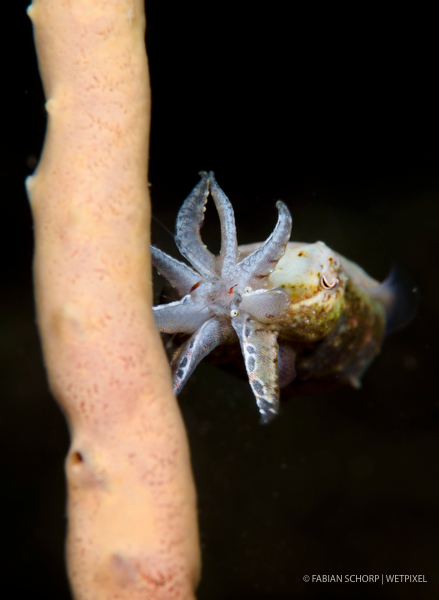

Varying apertures gives you a good way of controlling a cluttered background; a small aperture with some space between the subject and background allows for a completely black background as shown in the pygmy cuttlefish picture below, while a slightly larger aperture blurs the background to focus the viewer’s eye on the primary subject.
More on the topic and theory of sensor size and equivalence can be found here and here.

Lesson 4: Bring a wet diopter on every dive.
Enthusiastic guides will point out VERY small subjects to you. Knowing ahead of time that a tiger shrimp measures “up to 2 centimeters” is not helpful if you come across one in a perfect position, but measuring just 5 millimeters, with nothing but your standard macro lens. To quote Sascha Janson, the resident photo pro at Lembeh Resort/Critters@Lembeh: “You can’t go diving here without a super macro converter.”
Equipment list:
Nikon D750 DSLR
Nikon 105mm macro lens
Nauticam NA-D750 case with macro port 87 and 45° viewfinder
Nauticam SMC-1 super macro converter
Inon D2000/S2000 strobes
Fisheye Fix Neo Mini 500 focus light
What I ended up missing:
Nikon 60mm macro lens for larger, easily approachable subjects like adult frogfish.